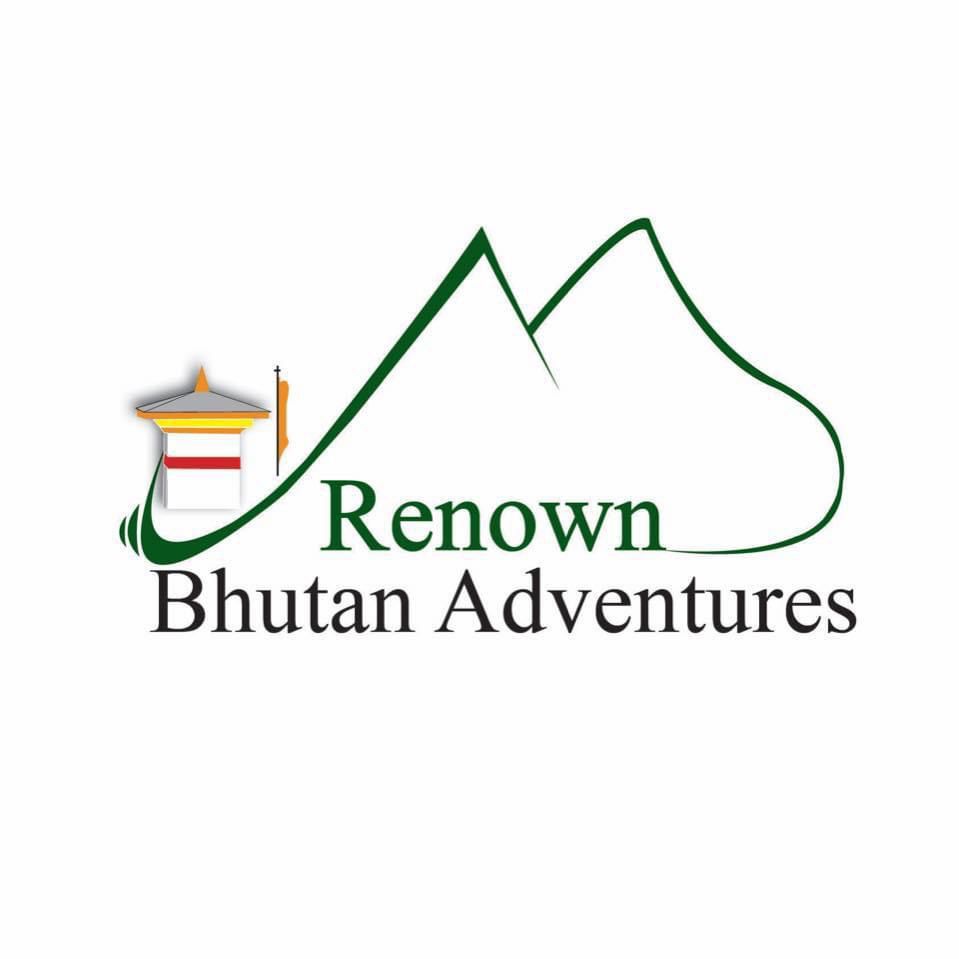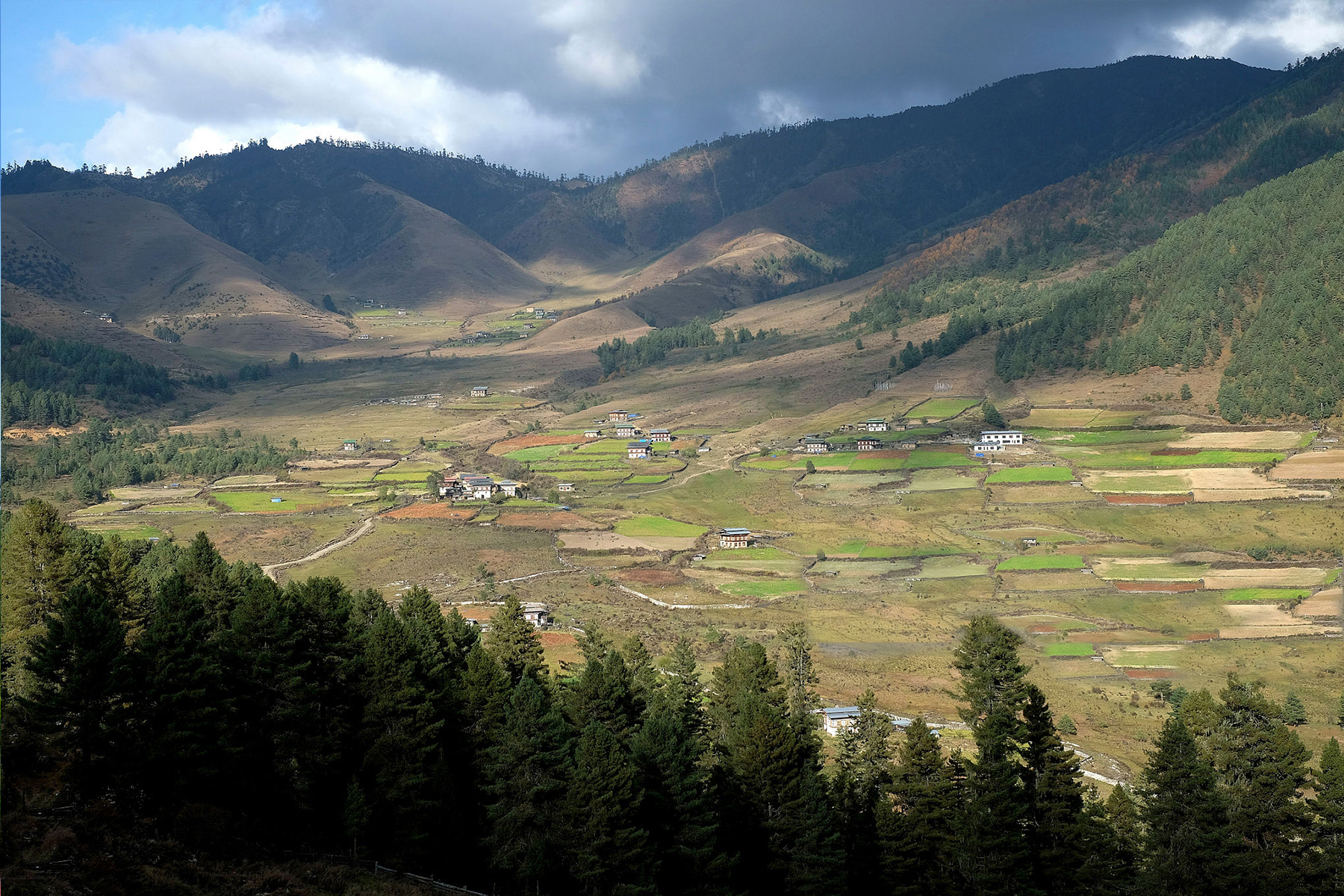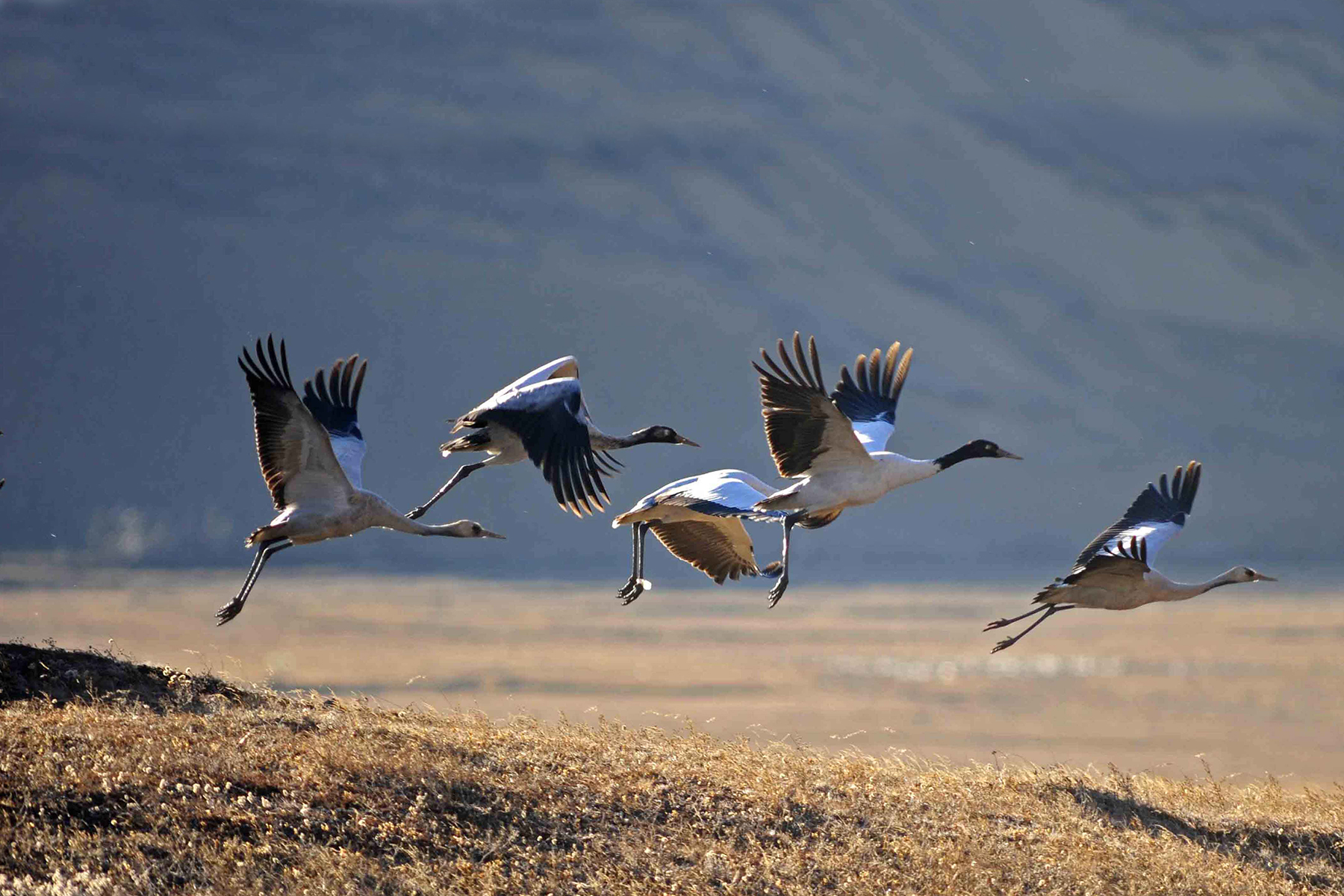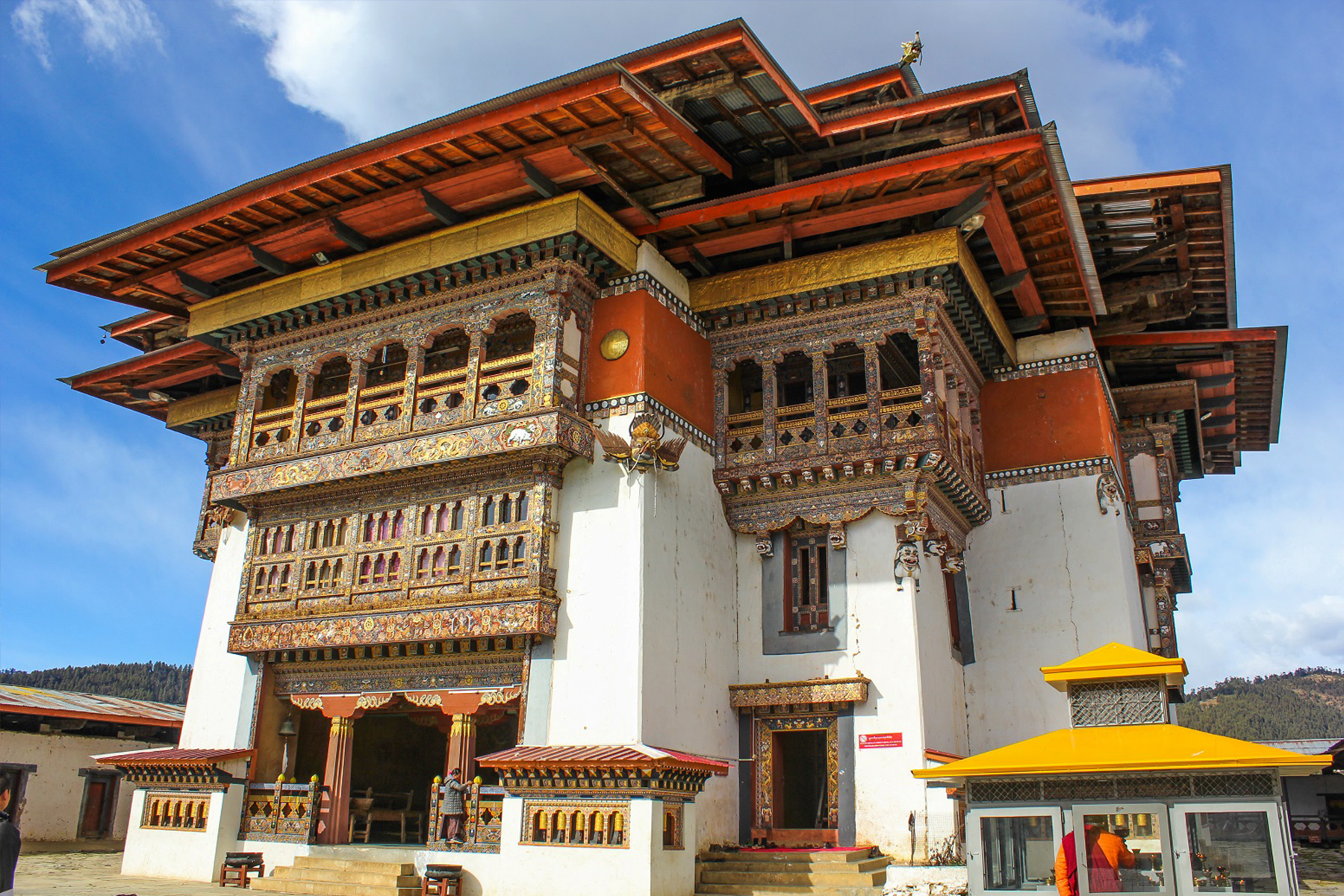Phobjikha Valley
Wangdue
Brief History
Phobjikha Valley (also spelt Phobjikha and, in the past, Phubjikha, the suffix kha means valley in Dzongkha) is a vast U-shaped glacial valley, also known as Gangteng Valley named after the impressive Gangtey Monastery of the Nyingma in central Bhutan, where the graceful black-necked cranes in Bhutan (Grus nigricollis) from the Tibetan Plateau visit the valley during the winter season to roost. On arrival in the Phobjikha Valley in the last week of October, the black-necked cranes circle the Gangteng Monastery three times and also repeat the process while returning to Tibet. The broad valley with its best-known marshland in Bhutan, is popular for its scenic splendour and cultural uniqueness. The valley is rich in faunal biodiversity and has, apart from the globally threatened black-necked cranes Grus nigricollis, 13 other globally threatened species. Within the ambit of the valley, an area of about 163 square kilometres (63 sq mi) has been declared a protected area, which is managed by the Royal Society for the Protection of Nature,(RSPN), for the protection of nature, authorized to manage, on lease basis, by the Ministry of Agriculture.
Black Necked Crane Centre
Wangdue
Brief History
Your first stop in Phobjikha should be the information centre of the Royal SoÂciety for Protection of Nature (RSPN), which has informative displays about the black-necked cranes and the valley environment. You can use the centre’s powerful spotting scopes and check what you see against its pamphlet Field Guide to Crane Behaviour. If the weather’s iffy, you can browse the library and watch a 15-minute video. Star of the centre is Karma, an injured black-necked crane who was discovered as an eight-month-old with a broken wing and now lives in a neighbouring enclosure. It's a rare chance to see these magnificent cranes up close. Donations are accepted for a project to build a bigger enclosure.
Gangtey Monastery
Wangdue
Brief History
The Gangteng Monastery, generally known as Gangtey Gonpa or Gangtey Monastery, is an important monastery of Nyingmapa school of Buddhism, the main seat of the Pema Lingpa tradition. located in the Wangdue Phodrang District in central Bhutan. Head Lama: Rigdzin Kunzang Pema Namgyal. Annual Festivals: Tshechu and Crane Festivals.
Bhutan is the last Himalayan kingdom, shrouded in amazing snow Peak Mountains and shadowy forests that create picturesque landscape. But that’s not all; the unique and best thing about Bhutan is that it is the only country that is 72% covered in forests making it not only carbon-neutral but the world’s only carbon negative country. Apart from this, Bhutan is a place where traditional Buddhist culture meets majestic fortress like dzongs and monasteries, it is undoubtedly a magical and mystical place to be. Its unique monastic architecture and the graffiti on the walls that bear paintings of penises as a sign to drive away the evil make Bhutan a sui generis destination. Reputed to be the last Shangri La, this one of its kind country is certainly the best place to visit for family vacation, honeymoon tours and even for adventure holidays. And to be a part of this enthralling place you can have your own share of Bhutan experience through this guided list of the top tourist attractions that you must see and do.




